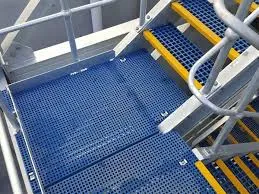
-
 Afrikaans
Afrikaans -
 Albanian
Albanian -
 Amharic
Amharic -
 Arabic
Arabic -
 Armenian
Armenian -
 Azerbaijani
Azerbaijani -
 Basque
Basque -
 Belarusian
Belarusian -
 Bengali
Bengali -
 Bosnian
Bosnian -
 Bulgarian
Bulgarian -
 Catalan
Catalan -
 Cebuano
Cebuano -
 China
China -
 China (Taiwan)
China (Taiwan) -
 Corsican
Corsican -
 Croatian
Croatian -
 Czech
Czech -
 Danish
Danish -
 Dutch
Dutch -
 English
English -
 Esperanto
Esperanto -
 Estonian
Estonian -
 Finnish
Finnish -
 French
French -
 Frisian
Frisian -
 Galician
Galician -
 Georgian
Georgian -
 German
German -
 Greek
Greek -
 Gujarati
Gujarati -
 Haitian Creole
Haitian Creole -
 hausa
hausa -
 hawaiian
hawaiian -
 Hebrew
Hebrew -
 Hindi
Hindi -
 Miao
Miao -
 Hungarian
Hungarian -
 Icelandic
Icelandic -
 igbo
igbo -
 Indonesian
Indonesian -
 irish
irish -
 Italian
Italian -
 Japanese
Japanese -
 Javanese
Javanese -
 Kannada
Kannada -
 kazakh
kazakh -
 Khmer
Khmer -
 Rwandese
Rwandese -
 Korean
Korean -
 Kurdish
Kurdish -
 Kyrgyz
Kyrgyz -
 Lao
Lao -
 Latin
Latin -
 Latvian
Latvian -
 Lithuanian
Lithuanian -
 Luxembourgish
Luxembourgish -
 Macedonian
Macedonian -
 Malgashi
Malgashi -
 Malay
Malay -
 Malayalam
Malayalam -
 Maltese
Maltese -
 Maori
Maori -
 Marathi
Marathi -
 Mongolian
Mongolian -
 Myanmar
Myanmar -
 Nepali
Nepali -
 Norwegian
Norwegian -
 Norwegian
Norwegian -
 Occitan
Occitan -
 Pashto
Pashto -
 Persian
Persian -
 Polish
Polish -
 Portuguese
Portuguese -
 Punjabi
Punjabi -
 Romanian
Romanian -
 Russian
Russian -
 Samoan
Samoan -
 Scottish Gaelic
Scottish Gaelic -
 Serbian
Serbian -
 Sesotho
Sesotho -
 Shona
Shona -
 Sindhi
Sindhi -
 Sinhala
Sinhala -
 Slovak
Slovak -
 Slovenian
Slovenian -
 Somali
Somali -
 Spanish
Spanish -
 Sundanese
Sundanese -
 Swahili
Swahili -
 Swedish
Swedish -
 Tagalog
Tagalog -
 Tajik
Tajik -
 Tamil
Tamil -
 Tatar
Tatar -
 Telugu
Telugu -
 Thai
Thai -
 Turkish
Turkish -
 Turkmen
Turkmen -
 Ukrainian
Ukrainian -
 Urdu
Urdu -
 Uighur
Uighur -
 Uzbek
Uzbek -
 Vietnamese
Vietnamese -
 Welsh
Welsh -
 Bantu
Bantu -
 Yiddish
Yiddish -
 Yoruba
Yoruba -
 Zulu
Zulu
frp sheet
Understanding FRP Sheets A Comprehensive Overview
Fiber Reinforced Polymer (FRP) sheets have emerged as a revolutionary material in construction and engineering, enhancing structural integrity while offering a lightweight and durable alternative to traditional materials. This article delves into the composition, advantages, applications, and future prospects of FRP sheets.
Composition of FRP Sheets
FRP sheets are composed of a polymer matrix reinforced with fibers, which can include materials such as glass, carbon, or aramid. The choice of fiber affects the properties of the final product. For instance, glass fibers offer excellent tensile strength and are cost-effective, making them popular in many applications. Carbon fibers provide higher strength-to-weight ratios and are used in high-performance environments, while aramid fibers are known for their impact resistance and durability.
The polymer matrix, often made from epoxy or polyester resin, acts as a binder that holds the fibers together and provides additional resistance to environmental factors, such as moisture and chemicals. The manufacturing process typically involves layering the fiber fabric with resin, curing it under controlled conditions to create a strong, cohesive material.
Advantages of FRP Sheets
The benefits of utilizing FRP sheets are numerous and significant. Firstly, their lightweight nature compared to traditional building materials reduces overall structural load, making them ideal for retrofitting existing structures without adding excessive weight. Secondly, FRP sheets possess remarkable resistance to corrosion and chemicals, making them suitable for environments that are harsh or expose them to corrosive substances.
Moreover, FRP materials have excellent tensile strength, which translates to outstanding performance under stress. They can withstand significant loads without deforming, making them suitable for reinforcing existing structures, such as bridges and buildings. Additionally, the flexibility in design allows architects and engineers to create intricate shapes and forms that may be difficult to achieve with conventional materials.
Another key advantage is the reduced maintenance cost. Due to their high resistance to degradation, structures reinforced with FRP sheets often require less frequent inspections and repairs, leading to long-term cost savings.
frp sheet

Applications of FRP Sheets
The versatility of FRP sheets enables their use in a wide range of applications. In the construction industry, they are often utilized for reinforcing concrete structures, including beams, slabs, and columns. This reinforcement improves load-bearing capacity and extends the lifespan of the infrastructure.
In transportation, FRP sheets are increasingly adopted in bridge construction and repair. Their lightweight properties facilitate easier handling and installation, while their strength enhances bridge performance under heavy traffic loads. Additionally, FRP sheets are used in the automotive and aerospace industries, where weight reduction is critical for fuel efficiency and performance.
The marine industry also benefits from FRP sheets due to their resistance to saltwater and harsh weather conditions. They are commonly used in boat hulls, docks, and other marine structures, where durability is paramount.
Future Prospects
As technology continues to advance, the future of FRP sheets looks promising. Innovations in manufacturing techniques and the development of new composite materials will likely enhance the performance and reduce the costs of FRP products. Furthermore, the increasing focus on sustainability in construction may drive demand for eco-friendly FRP options made from recycled or bio-based materials.
The adaptability of FRP sheets in various applications suggests that they will continue to play a crucial role in modern engineering and construction practices. As more industries recognize the benefits of FRP technology, its market share is expected to grow, paving the way for new possibilities.
Conclusion
In conclusion, FRP sheets represent a significant advancement in materials science, offering unparalleled strength, lightweight characteristics, and resistance to environmental challenges. Their diverse applications across multiple industries highlight their versatility and practical benefits. As the industry evolves and embraces new technologies, FRP sheets are poised to become an even more integral component of modern infrastructure and construction.









